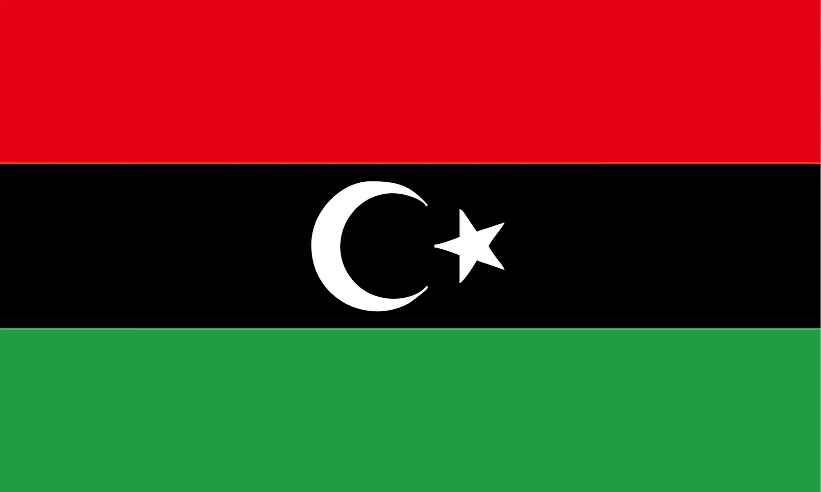
リビア
| 大陸 | アフリカ |
| 資本金 | トリポリス |
| 人口 | 6,541,948 |
| GDP | $90.89 億ドル |
| 一人当たりGDP | $14,200 |
| ダイヤルコード | +218 |
| ISOコード(2文字) | LY |
| ISOコード(3文字) | エルビーワイ |
リビアの風景






リビアについて
古代地中海文明と広大なサハラ砂漠が出会う国、リビアへようこそ。人口約700万人、176万平方キロメートルのリビアは、サハラ砂漠への北アフリカの玄関口として、目覚ましい歴史遺産と世界最大の砂漠を兼ね備えています。
地理的特徴と自然の美しさ
リビアの地形は、1,770kmに及ぶ地中海沿岸から90%に及ぶ広大なサハラ砂漠まで、驚くほど多様性に富んでいる。海岸沿いのオアシス、山脈、果てしなく続く砂丘など、ドラマチックなコントラストが特徴だ。
地形には、先史時代の岩絵が残るアカカス山地、ウバリ砂海の見事な砂丘、地中海沿いの肥沃な海岸地帯などがある。変化に富んだ地形は、地中海沿岸から極限の砂漠環境まで、独自の生態系を生み出している。
保護地域には、ユネスコの世界遺産に登録されているアカカス山地や、古代のオアシスの町ガダメスやガートがある。この国の地理的多様性は、植物相と動物相の両面で顕著な砂漠適応を支えている。
文化遺産と伝統
リビアの文化は、アラブ、ベルベル、地中海の影響が融合したものです。リビアにはレプティス・マグナやサブラタなど、地中海で最も保存状態の良いローマ時代の遺跡がある。
伝統的な芸術には、特にトリポリ・スタイルの独特の絨毯織りや金属細工などがある。音楽と舞踊の伝統は、ベドウィンの伝統と沿岸部の影響の両方を反映しており、伝統的な祭りは季節の変わり目や宗教的な行事を祝う。
リビア料理は地中海とサハラ砂漠の影響を組み合わせたもので、バゼーンやシャルバといった料理が特徴だ。アラブ文化とベルベル文化に深く根ざしたもてなしの伝統は、今も社会生活の中心となっている。
歴史の旅
リビアの歴史は、古代フェニキア人やギリシャ人の居住地から、ローマ帝国の支配、アラブ人の征服、オスマン帝国の支配、イタリアの植民地化、そして1951年の独立にまで及んでいる。国の領土には、北アフリカで最も重要な考古学的遺跡がいくつかある。
重要な時代には、フェニキアとローマの古代文明、イスラム教の普及、オスマン帝国の支配、イタリアの植民地化、そして独立後のさまざまな政治的発展が含まれる。文明の交差点としてのリビアの役割は、その文化的アイデンティティを形成してきた。
現代の経済状況
今日のリビア経済は、アフリカ最大級の膨大な石油埋蔵量を主な基盤としている。この国の戦略的立地と天然資源は、発展の大きな可能性をもたらしている。
最近のイニシアチブは、経済の多様化、インフラの再建、持続可能な開発に焦点を当てている。ヨーロッパとアフリカの間に位置するリビアは、地域貿易と協力の機会を提供している。
国際関係とグローバルポジション
リビアは安定と復興に取り組みながら、さまざまな国際パートナーとのつながりを維持している。リビアの戦略的立地とエネルギー資源が国際関係に影響を与えている。
ご存知でしたか?
- レプティス・マグナには、地中海で最も保存状態の良いローマ遺跡がある。
- アカカス山脈には1万2千年前の岩絵がある?
- リビアはアフリカ最大の石油埋蔵量を誇るのか?
- 古代都市ガダメスは「砂漠の真珠」と呼ばれているが?
結論
リビアは、古代の遺産と自然の驚異が融合したユニークな国です。ローマ時代の遺跡からサハラ砂漠の風景まで、伝統的な習慣から現代的な願望まで、リビアは独自のアイデンティティを守りながら進化し続けています。現代的な課題や復興に取り組む中で、リビアは豊かな文化遺産を守りつつ、その資源と戦略的な立地を生かした開発に取り組んでいます。